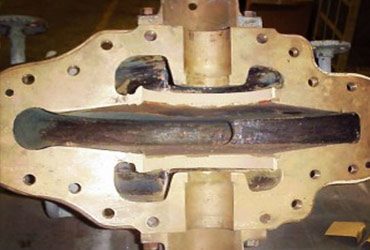Where Are Ceramic Coatings Most Used In The Automotive Industry?
The range of materials used in automobile engine components is extensive indeed. Heat is either dispersed or absorbed, thanks to some of the properties involved in the materials utilized in the mechanics, so temperatures can fluctuate significantly. A more efficient engine is a result of proper temperature regulation. That’s where ceramic coatings can make a difference.
Improved heat shielding, reduced friction, and increased wear resistance result from engine parts being protected by ceramic coatings. The performance of an automobile can be enhanced through the correct coatings improving, for one thing, horsepower ratings. They also assist in allowing the engine components to run in a more compatible, uniform fashion.
Most Commonly Coated Automotive Applications
Headers (ceramic treatment provides a higher corrosion resistance) and exhaust manifolds (ceramic treatment reduces turbulence through smoother surface provision) are the automotive applications most commonly protected by ceramic coatings. But they are not the only uses for coating treatments when it comes to automotive components. Let’s take a look at some of the other applications of ceramic coatings when it comes to the auto industry:
- Intake Manifolds – a cooler mix of fuel and air is the result of a lower level of heat penetration thanks to the interior ceramic coating on the intake manifold.
- Piston Skirts – while moving within the engine block, increased resistance to scratching and abrasion is featured by piston skirts with a protective coating. They provide, during engine startup, a dry sliding surface.
- Pistons – detonation is more efficient thanks to reduced carbon accumulation and higher fuel-burning efficiency. This is a direct effect of the coating making pistons more effective because the device’s heat reflection is improved.
- Cylinder Heads – exhaust ports and cylinder heads with ceramic coating provide a higher intensity of chamber burn thanks to exhaust gasses being circulated at a faster pace. Additionally, the thermal transfer between the cylinder head and the gas can be improved.
Application of Coatings
Surfaces must be nothing short of immaculate before coating treatments can be applied. This ensures adhesion of the coating. Heating follows cleaning – this lessens the molecular porosity removing any remaining contaminants. Now the coating will securely adhere to the automotive component.
A gravity fed spray gun is usually used to apply tungsten and titanium which are common automotive ceramic coatings. Precision application control is provided by a narrow nozzle. The process takes place inside a spraying booth with higher pressures used for liquid-based coatings and lower pressures used for solvent coatings. Applications are made in very thin, evenly distributed layers.
The Component Must Be Inspected and Allowed to Cure
An inspection concentrates on the even, uniform distribution of the ceramic film. Once this is assured, an evaporation process takes place while the component air dries. It is put in an oven which provides air circulated curing by use of an even heating treatment. Curing takes place through incrementally rising temperatures that begin as low as 170°F but can increase to an astounding 600°. Finally, burnishing assures the component will meet clearance requirements and helps to guarantee the exact thickness level required.
Specific formulations for ceramic coatings focus on oil shedding, corrosion resistance, friction reduction, and thermal resistance. Coatings are specialized because, without compromising the remaining properties of the components, they are used for the delivery of precise material characteristics.



